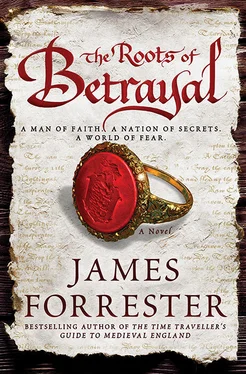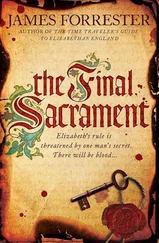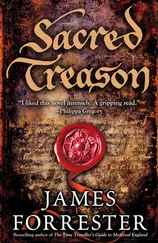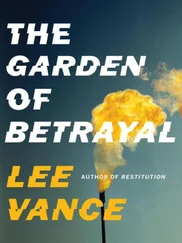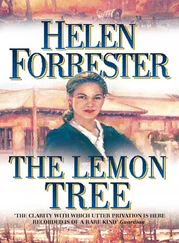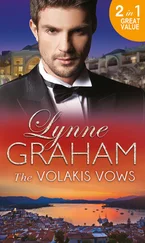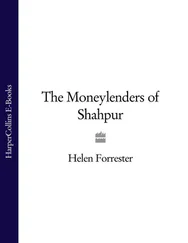James Forrester - The Roots of Betrayal
Здесь есть возможность читать онлайн «James Forrester - The Roots of Betrayal» весь текст электронной книги совершенно бесплатно (целиком полную версию без сокращений). В некоторых случаях можно слушать аудио, скачать через торрент в формате fb2 и присутствует краткое содержание. Жанр: Исторический детектив, на английском языке. Описание произведения, (предисловие) а так же отзывы посетителей доступны на портале библиотеки ЛибКат.
- Название:The Roots of Betrayal
- Автор:
- Жанр:
- Год:неизвестен
- ISBN:нет данных
- Рейтинг книги:5 / 5. Голосов: 1
-
Избранное:Добавить в избранное
- Отзывы:
-
Ваша оценка:
- 100
- 1
- 2
- 3
- 4
- 5
The Roots of Betrayal: краткое содержание, описание и аннотация
Предлагаем к чтению аннотацию, описание, краткое содержание или предисловие (зависит от того, что написал сам автор книги «The Roots of Betrayal»). Если вы не нашли необходимую информацию о книге — напишите в комментариях, мы постараемся отыскать её.
The Roots of Betrayal — читать онлайн бесплатно полную книгу (весь текст) целиком
Ниже представлен текст книги, разбитый по страницам. Система сохранения места последней прочитанной страницы, позволяет с удобством читать онлайн бесплатно книгу «The Roots of Betrayal», без необходимости каждый раз заново искать на чём Вы остановились. Поставьте закладку, и сможете в любой момент перейти на страницу, на которой закончили чтение.
Интервал:
Закладка:
He began to walk north, deciding he would next go to Robert Lowe’s house, adjacent to the wall near Cripplegate. He crossed Old Fish Street, turned into Bread Street, and marched past Gerrard’s Hall into the parish of St. Mary le Bow. Lines of tiled roofs greeted him: two-story houses, three-story houses, with shops at ground floor and leaning upper structures. Old houses and new, glazed houses and those just with shutters. At Cheapside there were crowds dawdling around the market stalls and looking in the unshuttered shop fronts along the street. Some people were queuing at the conduit; others had stopped to watch a street juggler. Clarenceux crossed straight into Wood Street, his mind fixed on Robert Lowe.
When he arrived at the blacksmith’s house, he glanced up at the windows. They were all closed. It was not a good sign. Still, he knocked and waited for a full minute before walking down the side of the house to try the gate through to the backyard and the forge, where Lowe worked. This too was locked.
He looked back along the street. He knew he could climb over and into the yard, but that would not necessarily give him the information he needed. It was suspicious that Lowe was not at home on the same day that Emery had stayed away overnight. Had Emery spoken to Lowe?
It did not matter. There was one person left who might be able to answer his questions: Nicholas Hill, in St. Dionis Backchurch.
23
In the parlor of his house, Walsingham rubbed his hands to warm them and sat down again at the table. It was covered in papers. These in turn were covered in black ink: symbols, lists, and calculations. It now seemed certain that the cipher was alphabetic, not numeric, so that it was the shapes that represented the actual letters, not their numerical value.
A knock came at the door.
“Go away,” shouted Walsingham, loath to look up from his notes. The door opened. He glanced up to see who it was.
A well-dressed man in his early twenties entered and bowed. “Mr. Walsingham, if you will permit me, I have some suggestions.”
“Master Richards. You have discovered something?”
“I think so, sir. The message is a cipher, written in English. May I show you?”
Walsingham beckoned him forward. The young man placed a sheaf of papers on the table. He shuffled one to the top.
“This is the message as received. You remarked on the recurrence of the sequence DCC-. As you know, it is not at first clear whether this is a code or a cipher. Also, if it is a cipher, then we need to know if DCC- represents one, two, three, or four letters. I tried all the common three-letter words and none of them worked, so I set about trying all the common four-letter words with a double letter. That proved false too. The French solution did not work either. There are very few double letters in Latin. That set me thinking. Why did we think the three-letter solution false? It was because of the commas. If you recall, we found instances of a pause or a comma followed by two letters and then another comma, and so we concluded that the two letters had to represent a single letter-A or I-but that did not work elsewhere in the message. But what if the commas themselves were part of the cipher? That way of thinking is more productive. In fact, the message starts to work.”
“Show me.”
John Richards placed a second piece of paper in front of Walsingham. “I went back to our first theory-that DCC- stands for a common three-letter word, such as ‘and’ or ‘the.’ Taking the latter possibility, the D would be a cipher for t , CC for h and — for e . Identifying the th is important because it shows where the word that is most likely to occur, and that reveals the important cipher for a second vowel, A , which turns out to be a V . If you look at the message, you find a comma followed by the letters ththat . For this reason we initially ruled out the possibility that DCC- could mean ‘the.’ But if the comma is part of the cipher, then it makes sense. The section in question reads ‘the MMMeIe, ththat’ or, spaced properly, with the deciphered letters underlined, ‘theMMMeIe,th that.’ Obviously a triple letter MMM is impossible, so that must be a cipher either for a single letter or a diphthong. But, look at the comma in that passage: there are very few words that end with the four letters e-something-th. Even allowing for phonetic spellings, that pause can only represent a d , an n , or an r .
“Now, there is a long sequence repeated toward the end. I’ve underlined the letters already hypothesized from the words ‘the’ and ‘that.’” He placed a third sheet over the top of the second. It had just a section of the text:
TCCC\ICCCCCCCCE+CCCCEMMME,
TATXIEMMMMMMCCEIIXMMMMMMEAIELCCCC\
CCCMM\, /\, AT/AII,\, THEMMMEIE,
THTHATIIECCCACIIIEMMMICCCCEC\IIIXMMMMMMME,
/C\ICCCCCCCCE+CCCCEMMME, TATXIEMMMT\H\
“What jumps out is the deciphered sequence of letters ‘tat.’ It appears twice-and both times they are preceded by the letters ‘CICCCCCCCCE+CCCCEMMME,’ and followed by ‘XIEMMM.’ But the interesting thing is that the first time they are followed by two ‘MMM’s and the second by only one. As one cannot have a triple letter, ‘MMM’ is probably a single letter. Now, going back to the section we identified earlier”-Richards pointed back at the second sheet-“the ‘MMM’ in ‘MMMEIE,TH’ must also be a single letter. There is only one seven-letter word that fits that pattern: ‘seventh.’ And finally”-he placed his last sheet of paper on the table-“if you test this hypothesis, the message does start to read more coherently, because that repeated long word that I mentioned becomes decipherable: ‘\VCCCCCCCCE+CCCCESENTATXVEST.’ You can see the word ‘representatives’ so ‘CCCC’ must be an R and X is the cipher for I.”
Walsingham looked at the last page, which Richards now placed before him. It read:
RI›HTHICCCIIIMMCIIE‹\CCCCCCEN/VST\C\VRMMA/
CSHIPIIEHAVERE‹EIVE/C\VRINSTRV‹TI\NSLR\
CCCSIRPER‹IIAMMAN/THEIII/\IIISIIIMMMMIN›T\/\
IIHATSCCE‹ANT\REST\RETHE‹ATH\MMI‹TREASVRET\
VSS\THATC\VAN/IIET\›ETHERCCCI›HTELLE‹
TITSTRVTHSHEIIIMMMMIIIE/ESPAT‹HE/IIICSHIPINTHE‹\
CCCPANC\LR\IIIERTMM\IIELR\CCCMM\N/\NT\SAN/
III‹HAN/THERE‹ HAN›E/T\AVESSEMMIII\VN/L\
RS‹\TMMAN/IIHEREVP\NSHEIIIMMMM‹\
NLICCCCCCCHERARRIVAMMIIITCCC\
VRREPRESENTATIVESSHEIIIMMMMMMEAVELR\
CCCMM\N/\NAT/AIIN\
NTHESEVENTHTHATIIECCCACIIIESVREC\
IIIIMMMMSEN/C\VRREPRESENTATIVEST\H\MMCCCCC\\/
IIEIIIE›C\VSEN/II\R/IIICTHISSACCCECCCESSEN›ER›\ /
SPEE/C\VRMMA/CSHIPC\VR/EV\TE/SERVANTSPER‹CR\C
“I can see the word ‘treasure,’” said Walsingham. “I can also see ‘servants’…yes, and I can see the word ‘instructions’-look, that diagonal line must be an O.”
“And the first word is ‘right,’” declared Richards, reading over his shoulder.
“Which means that ‘essenger’ appears near the end, so ‘CCC’ is an ‘m.’ This is excellent, Richards.” Walsingham nodded at his protégé approvingly. “Sir William will be very pleased.”
24
Clarenceux’s stride grew faster as he walked along Lombard Street. He was angry. He looked up at the tower of St. Mary Woolnoth and frowned, despite the pleasant blue sky, patched with white clouds. Hours were passing and he had nothing to show for the day. His enemies had betrayed him and now they were stealing his time as well. Minute by minute he was losing the chance to trace Rebecca.
Читать дальшеИнтервал:
Закладка:
Похожие книги на «The Roots of Betrayal»
Представляем Вашему вниманию похожие книги на «The Roots of Betrayal» списком для выбора. Мы отобрали схожую по названию и смыслу литературу в надежде предоставить читателям больше вариантов отыскать новые, интересные, ещё непрочитанные произведения.
Обсуждение, отзывы о книге «The Roots of Betrayal» и просто собственные мнения читателей. Оставьте ваши комментарии, напишите, что Вы думаете о произведении, его смысле или главных героях. Укажите что конкретно понравилось, а что нет, и почему Вы так считаете.
